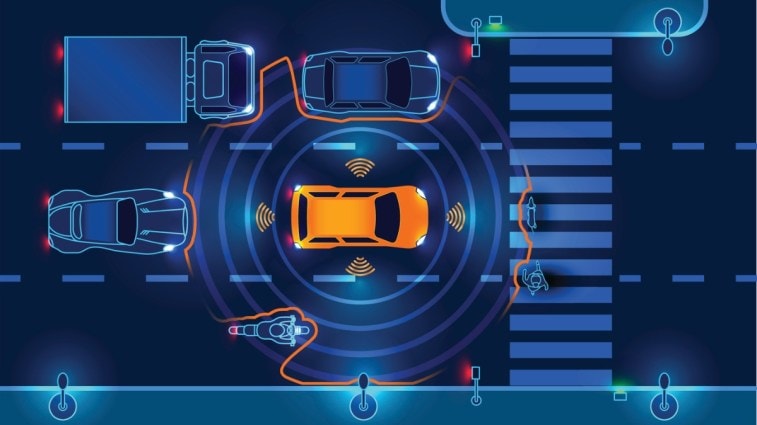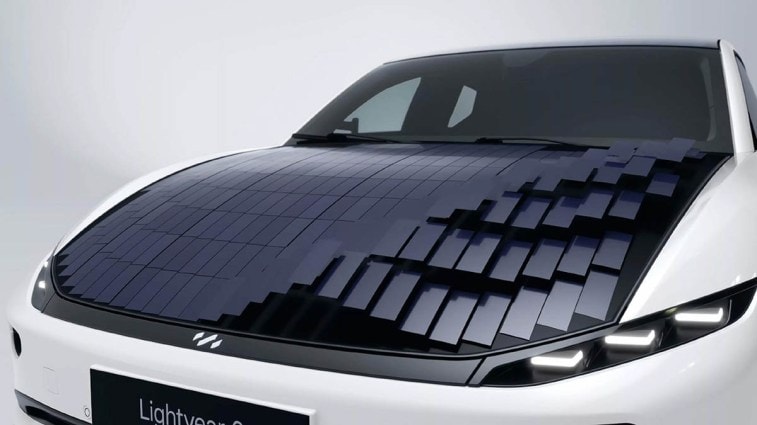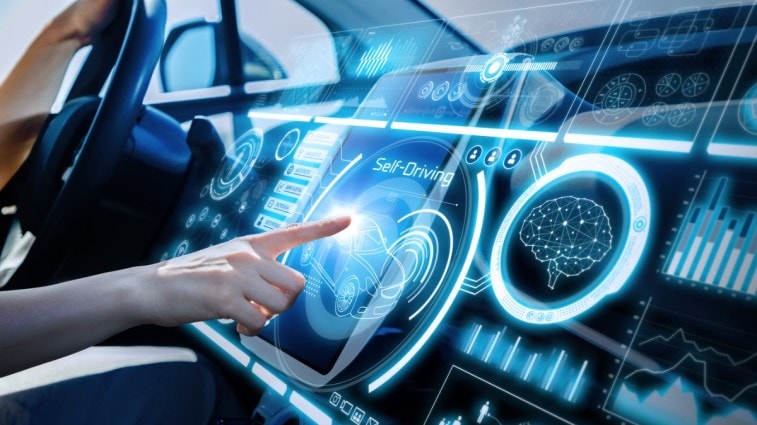Quick facts about the car’s advanced features
- Many of today’s advanced security technologies continue to evolve, expanding their role and increasing their impact.
- Modern cars are communication hubs that help keep passengers connected to the outside world.
- Ultimately, the goal of advanced car features is fully autonomous vehicles that drive themselves.
Each generation and era can point to technological advances, without any doubt believing that theirs was the era of greater enlightenment. Today, technological advances are like rain coming from a wide range of disciplines. One of the reasons for the relentless escalation of new car prices is ever-advancing technology, much of which is driven by the race to self-driving cars. Read on for a round-up of the best and most advanced features in cars today, as well as some cutting-edge technologies that just made their place.
What are the advanced features of the car?
For our purposes here, advanced car features are those that arise from technological developments that improve the safety, comfort or connectivity of motor vehicles. Yes, that covers a lot of ground; however, our goal is to paint a general picture of advanced car technology now and in the near future.
Evolution of automotive technologies
So much is happening on so many fronts of automotive technology that keeping up with it is practically impossible. Not so long ago, we judged a car on its style, mechanics, fuel economy, comfort and safety. In other words, we bought a vehicle in a very similar way to buying a washing machine, a lawnmower, or a bowling ball. However, in the last 20 years, the rise of software as a primary component in modern motor vehicles has completely changed the industry. It has also rearranged our priorities when buying a car.
In short, we’ve come to expect much more from a car than simply transporting us from point A to point B. Cars must now function as rolling communication hubs. In fact, in a March 2022 update, Smartcar, a company with a platform to help integrate mobility apps, reported that by 2020, 91% of all new cars sold provided Internet connectivity. In today’s expectations, however, car connectivity involves much more than just internet access.
RELATED: The Coolest Electric Car Features You’ll Want in the Future
What is automotive connectivity?

We’ll break down car connectivity into three different areas: infotainment, telematics and V2X. We will not delve into them; however, we will provide an overview of what they are. You will see some overlap as we define the connectivity elements.
What are infotainment systems?
A car’s infotainment system is a confluence of information about the vehicle’s internal workings, control of some of its systems, and entertainment from outside the car’s systems. For example, radio programming, streaming music, a DVD entertainment system, and built-in Wi-Fi are all elements of an entertainment system. Your smartphone interface is also a function of this system.
Typically, some of the other systems in your car, such as climate control, navigation, on-board cameras, etc., are also functions of the infotainment system. Most infotainment systems include a touch screen to control and monitor all system functions.
Not often incorporated into the infotainment system because it has its own screen separate from the touchscreen, a digital driver information system provides car performance updates. These can include tire pressure, car speed, outside temperature, a compass, battery drain, etc.
Augmented reality front display
The augmented reality (AR) head-up display (HUD) or ARHUD deserves a separate mention. Many drivers are familiar with the HUD’s static information in a fairly small image projected onto the windshield roughly at the front edge of the hood. Most projected images are called secondary information because they contain information available elsewhere. For example, vehicle speed, navigation directions, speed limit and other static data are also found on different displays and screens.
ARHUD’s benefits include a much larger field of view and the ability to overlay critical information on the roadway and other real-world objects in front of the car. It can put street names on actual streets as you get closer. It can provide real distances between you and objects in front. Plus, it can recognize and flag threats long before they get there.
MORE: Night vision in a vehicle: Is it worth it?
What is vehicle telematics?
Telematics in a car includes GPS-based and cloud-based functions. This includes Wi-Fi, browsing, and any interaction where data is sent to the cloud, processed, and then returned as an action. For example, Hyundai’s Bluelink app lets you use your smartphone to unlock your car. It does this by sending a signal to the cloud which, seconds later, sends it as a command to unlock the vehicle.
Updates over the air
Among the most exciting and cost-saving aspects of cloud-based telematics are over-the-air (OTA) updates. Many of today’s electric vehicles (EVs) provide this capability. It allows automakers to remotely upgrade or fix a vehicle’s software via the cloud.
What is V2X?
Your vehicle’s ability to communicate with anything around it is V2X. A basic requirement for fully autonomous cars is their ability to communicate with surrounding traffic and infrastructure. In other words, V2X includes communication between your vehicle and the vehicles around it (V2V), your home (V2H) and infrastructure (V2I) such as road construction sites. An autonomous car must know its place in the world at all times. We may be decades away from driverless vehicles driving our streets, but automakers are already laying the groundwork for V2X in today’s cars using sensors, cameras, LiDAR (light detection and ranging) and cloud connectivity.
For example, a few years ago, Audi presented to the press their work on some of their V2I technologies. Working with the city of Las Vegas, Nevada, he established a downtown route in which traffic lights could communicate with appropriately equipped Audi models. As you approach a traffic light, the head-up display would show a countdown to green if it was red, or to red if it was green. The idea is to reduce driver stress and save fuel as drivers time their arrival at an intersection based on the countdown to green or red.
Wireless charging of electric vehicles
As a driving culture, we’ve barely gotten used to electric vehicles and the inconvenience of charging them. Well, battery recharging will be much simpler with the development of plug-free charging. Using airborne electricity generated by a magnetic field allows an EV battery to be charged via a pad on the ground. An electric vehicle must have the right equipment to take advantage of a charging platform. Consequently, we won’t see a massive influx of charging tablets overnight, but automakers are working on it.
Electric car with solar energy

A solar-only EV is simply not feasible until solar technology takes several major steps forward. However, in the meantime, some car manufacturers are already incorporating solar power into their charging schemes. For example, the Dutch-built Lightyear 0 is in production now with promises of up to 44 miles of range from solar panel charging alone. Unfortunately, it won’t be coming to the US. However, it appears that the Lightyear 2 will be produced in much larger numbers and could make its way to this market. Meanwhile, Hyundai and Toyota are working on solar panels for select electrified models that will be available in the US. In fact, Hyundai already offers a solar panel roof on Ioniq 5 models in South Korea.
biometrics
Biometric applications for cars will encompass everything from unlocking doors to turning on the ignition and initiating driver presets (seat, audio preferences, etc.) to monitoring driver awareness. In other words, in vehicles, biometrics will add convenience and another layer of security through facial recognition and fingerprint technologies. Tesla already uses facial recognition to monitor driver awareness in the Model 3 and Model Y versions.
MORE: What are adaptive headlights?
Advanced driver assistance systems
Often called “advanced safety” systems or advanced driver assistance systems (ADAS), these technologies take some of the stress away from the driver while proactively helping to prevent or minimize accidents. Some ADAS are critical components for the semi-autonomous driver assistance systems available in many cars described below.
ADAS features include Lane Center Assist (LCA), Automatic Emergency Braking (AEB) and Rear Cross Traffic Alert (RCTW). Check out Kelley Blue Book’s Car Safety Features 101: Everything You Need to Know for a list of ADAS features.
Semi-autonomous driving assistance
Incorporating various ADAS technologies, such as LCA, AEB and Adaptive Cruise Control (ACC), into a cohesive system allows a car to turn, accelerate and brake automatically. This Level 2 partial automation still requires the driver to pay attention and maintain control with their hands on the wheel. In other words, the driver still monitors the driving environment.
This level is where current semi-autonomous driving systems are because government regulations restrict the degree of semi-autonomy. The next step is level 3 conditional automation, where the system monitors the environment and controls the vehicle. However, the driver still needs to pay attention and be ready to take over. The driver’s hands on the wheel is optional unless he takes control. You can learn more about the six levels of driving autonomy in Kelley Blue Book’s article Self-Driving Cars: Everything You Need to Know.




1 Comment
Excellent blog post. I certainly love this website. Keep it up!